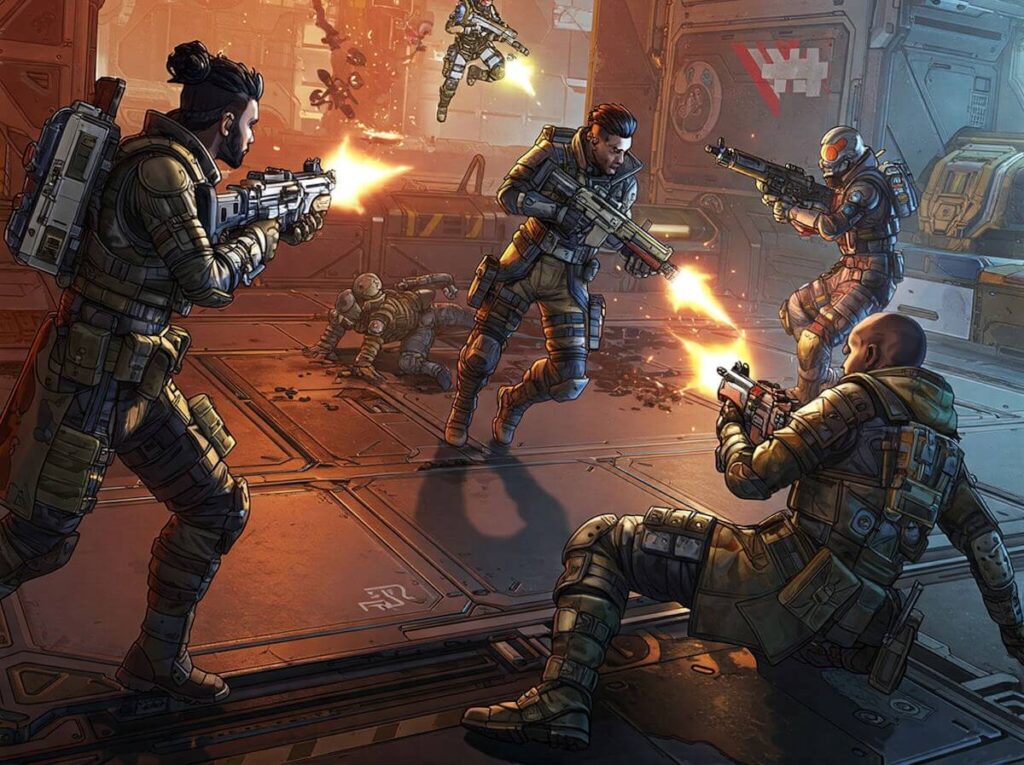Introduction to Roguelike Games
The roguelike genre traces its origins to the groundbreaking game “Rogue,” released in the 1980s. This genre is characterized by key features that set it apart from traditional video games, notably procedural generation, permadeath, and turn-based gameplay. Procedural generation refers to the random creation of game environments and elements, ensuring that no two gaming experiences are the same. This element introduces unpredictability, maximizing replayability, as players explore different layouts, item placements, and enemy encounters with each run.
Permadeath is another fundamental characteristic, representing a permanent death for the player’s character upon failure. This mechanic heightens the stakes of progression, requiring careful strategy and decision-making rather than reliance on a simple save system. Players must embrace the challenge of beginning anew, which can lead to frustrating yet exhilarating moments, ultimately enriching the game’s depth and rewarding resilience. Turn-based gameplay, typical in classic roguelikes, allows players to make calculated actions, weighing risks and benefits as they navigate treacherous dungeons or combat formidable foes.
The roguelike genre has undergone significant evolution since its inception. Early examples mainly offered ASCII graphics and text-based interfaces, appealing primarily to a niche audience. As technology advanced, these games evolved into visually richer experiences while retaining core mechanics. Modern interpretations have diversified the genre, incorporating various themes, gameplay styles, and audience preferences. Today, roguelikes can be found on various platforms, appealing to both hardcore gamers and casual audiences alike. This dynamic growth exemplifies the genre’s resilience and adaptability, setting the stage for an analysis of one of its most acclaimed titles, “The Binding of Isaac.”
The Unique Narrative of The Binding of Isaac
The Binding of Isaac presents a unique narrative that is intricately woven into the fabric of its gameplay. The story revolves around a young boy named Isaac who is thrust into a harrowing journey following his mother’s drastic, religiously motivated decision to sacrifice him. This horrifying premise serves as a backdrop for the exploration of pivotal themes such as fear, faith, and personal struggle. Each run through the game’s procedurally generated dungeons reflects Isaac’s internal conflicts, illustrating the depth of the character’s emotional turmoil.
As players navigate the challenges presented by the game, they do so while uncovering layers of Isaac’s backstory. The symbolism present in the game often resonates with players, as they grapple with their own fears and struggles. The gameplay mechanics are inextricably linked to its narrative structure; each decision a player makes can be seen as a reflection of Isaac’s desperation to escape his tumultuous situation. The dark and surreal environments mirror the psychological struggles experienced by the protagonist, thus enhancing player immersion.
The game not only tells a story through its visuals and settings but also through various items and enemies encountered along the way. Each item Isaac collects has a backstory and a thematic significance that contributes to the overall narrative, adding layers of meaning to the gameplay experience. The monsters watching over Isaac symbolize deeper fears, serving as manifestations of both the external and internal battles he faces. This complex interplay between narrative and gameplay cements The Binding of Isaac as a leading example of storytelling in the roguelike genre.
Ultimately, the compelling nature of the narrative engages players on an emotional level while still allowing for a variety of gameplay experiences with each run. The Binding of Isaac’s storytelling, meticulously integrated within its mechanics, transforms the game into an exploration of human struggle that resonates deeply with its audience.
Procedural Generation and Replayability
The Binding of Isaac employs a sophisticated procedural generation system that fundamentally enhances the roguelike experience, particularly through its approach to level design, item acquisition, and enemy placement. This system generates a unique configuration for each run, where every playthrough is characterized by randomization, ensuring that no two sessions are the same. The application of procedural generation means players encounter different enemies and items with each new attempt, significantly contributing to the game’s replayability and overall engagement.
In The Binding of Isaac, the levels are intricately crafted through a combination of pre-designed elements and algorithmic arrangements. This blend gives rise to a diverse range of environments while introducing new challenges and opportunities for players. The variability in room layouts and enemy types not only keeps gameplay fresh but also forces players to adapt their strategies with each run. Players may find themselves utilizing different item combinations and play styles as they navigate through various iterations of the game’s levels, reflecting the unpredictable nature that procedural generation provides.
The variety of items that players can collect during their runs is central to the game’s addictive qualities. With hundreds of items available, many possessing unique effects, the unpredictability of item generation ensures that players must remain versatile in their approach. This randomness encourages experimentation, as players try to discover the synergies between items, fostering a sense of discovery throughout the gameplay process. Each run may yield a combination of items that drastically alters strategies, requiring players to think on their feet and adapt to ever-changing scenarios.
Ultimately, the incorporation of procedural generation not only lays the foundation for infinitely replayable gameplay but also enhances player engagement by introducing a fresh experience with every playthrough. Players are continually motivated to return, driven by the promise of novel encounters and the thrill of the unknown.
Diverse Item and Upgrade Mechanics
The Binding of Isaac stands out in the roguelike genre due to its impressive array of items and upgrades that significantly influence each playthrough. At the core of the game’s design lies a comprehensive item pool, containing hundreds of different weapons, passive abilities, and transformations that can be discovered during runs. Each item possesses unique characteristics, and many can combine in surprising ways, creating synergies that enhance the player’s capabilities or alter the mechanics of gameplay itself.
For instance, an item like “Brimstone” drastically changes Isaac’s tears into a powerful charging beam, while items like “Tammy’s Head” allow players to unleash a devastating wave of tears around them. Such combinations frequently lead to creative strategies, inspiring players to experiment with various item pairings to discover new, effective setups. This dynamic interplay encourages continual experimentation, a hallmark of roguelike games that enhances replayability.
The interaction between items does not merely provide a variety of gameplay but also necessitates strategic thinking from players. Understanding how specific items amplify one another can lead to powerful builds that allow players to navigate the game’s increasingly difficult challenges with ease. However, players must balance their choices carefully; opting for one powerful item may lead to the omission of another that could be just as beneficial.
The game’s design allows for an infinite number of potential combinations, making each run feel fresh and unpredictable. As players uncover new items or revisit past favorites, they can assemble unique loadouts tailored to their play style. This aspect of The Binding of Isaac not only enhances player engagement but also solidifies its reputation as an ultimate roguelike experience, as no two sessions are ever quite the same. Indeed, this diversity in item mechanics is a core element that keeps players returning for more adventures in the depths of Isaac’s world.
Challenging Gameplay and Difficulty Levels
The Binding of Isaac stands out in the realm of roguelike games primarily due to its challenging gameplay and intricately designed difficulty levels. From the very start, players are plunged into a grotesque yet captivating world that requires not only quick reflexes but also strategic thinking. The game embraces a relentless difficulty curve that steadily ramps up as the player progresses, ensuring that even casual players are introduced to the challenge in a way that feels natural and engaging.
The game features various difficulty settings, which makes it accessible to both newcomers and seasoned players alike. Novice players can start with the standard mode, allowing them to familiarize themselves with the mechanics and learn the ropes without feeling overwhelmed. As they hone their skills and develop a deeper understanding of the game’s mechanics, players can gradually shift to harder levels, such as the ‘hard mode’ which intensifies the game’s challenges significantly. This thoughtful design invites players to learn and adapt, fostering a sense of growth which is central to the roguelike experience.
Moreover, The Binding of Isaac allows for an expansive range of character builds and power-ups, creating a unique experience with each playthrough. Players are encouraged to experiment with different combinations and strategies, and this versatility is where the game excels. As players face tougher enemies and explore deeper levels, they learn from their mistakes, promoting a cycle of continuous improvement and mastery. This level of challenge paired with the game’s inherent unpredictability keeps players engaged, as they are always faced with the opportunity to improve their skills while navigating an ever-evolving gameplay landscape.
Art Style and Atmosphere
The Binding of Isaac presents a distinctive art style that sets it apart from other games within the roguelike genre. The graphics are characterized by a hand-drawn aesthetic, evoking a sense of childlike innocence while simultaneously addressing dark themes. This juxtaposition between playful visuals and grim subject matter captivates players, inviting them into a world that is as unsettling as it is engaging. The characters and environments are rendered with a quirky, cartoonish flair, which can initially appear whimsical but often hides deeper, more disturbing connotations.
Each room in the game features unique designs that reflect the narrative’s exploration of trauma and fear, creating a thematic coherence that resonates with the player. The enemy designs are grotesque and imaginative, echoing the protagonist’s inner turmoil and psychological struggles. This vivid representation of existential dread is crucial for maintaining immersion, as the game’s visual storytelling captivates players, subtly guiding them through the various layers of its narrative.
Sound design and music further enhance the game’s overall atmosphere. The audio complements the visuals, employing a haunting soundtrack that shifts in intensity based on the player’s actions. Tension builds as players navigate the increasingly complex dungeons, and the sound effects contribute to the overall sense of urgency. Each sound, from the soft whimpers of Isaac to the discordant noises of enemies, adds texture to the gaming experience, ensuring that players remain fully engaged as they traverse the game’s intricate and terrifying world. The combined effect of art and sound creates a cohesive experience, embedding players in its uncanny universe while mirroring the underlying themes of fear, survival, and redemption.
Community Engagement and Modification
The Binding of Isaac has cultivated a vibrant and diverse community that significantly enhances its gameplay experience. Players have a unique opportunity to engage not only through standard game mechanics but also by actively participating in a myriad of community-driven activities, fostering a culture of creativity and innovation. This engagement is particularly evident in the thriving modding scene, where players create customized content that expands the game’s universe. Mods range from simple quality-of-life improvements to major content overhauls and entirely new game experiences, allowing players to express their creativity and share it with others.
Fan art stands as another testament to the dedication of The Binding of Isaac’s community, as artists frequently reinterpret characters, environments, and themes in their unique styles. This creative output reinforces a shared appreciation for the game, allowing fans to connect over their favorite elements and characters. Through art, community members celebrate their love for the game, furthering the sense of belonging and camaraderie within the community.
Moreover, community challenges act as a catalyst for enhanced engagement, prompting players to achieve specific goals or complete certain tasks within the game. These challenges, often organized through social media and gaming forums, encourage players to push their limits, explore different strategies, and share their experiences. Not only do these activities deepen the player experience, but they also promote positive interactions among community members, thereby establishing a supportive environment where tips and tricks can freely exchange hands.
Ultimately, the community surrounding The Binding of Isaac is vital to its enduring appeal. Through modding, art, and challenges, players not only extend the life of the game but also contribute to a collaborative spirit that enriches the overall experience. This level of engagement ensures that The Binding of Isaac remains not just a game, but a continuously evolving platform for creative expression and community interaction.
Comparative Analysis with Other Roguelikes
The Binding of Isaac stands out distinctly within the roguelike genre, particularly when compared to other popular titles such as Hades and Dead Cells. One of the key aspects that set it apart is its unique gameplay mechanics. Unlike Hades, which employs a more traditional action-role playing format combined with a structured story arc, The Binding of Isaac thrives on its procedural generation coupled with a distinctly unsettling narrative. Each run offers a blend of randomly generated rooms and items, enhancing the replayability factor significantly. The dynamic nature of item synergies creates a gameplay environment where no two sessions feel the same, inviting players to experiment with various strategies and combinations.
Narrative depth also plays a critical role in differentiating these games. Hades presents an engaging story centered around Greek mythology and the protagonist’s journey to escape the Underworld, featuring well-developed characters and plot evolution. Conversely, The Binding of Isaac employs a more abstract narrative that delves into themes of fear, loss, and familial relationships, expressed through its disturbing visual style. The story unfolds through symbolic representations, making players contemplate the underlying messages while navigating through its dark and challenging environment. This contrast in narrative delivery is instrumental in forming distinct player experiences.
When considering overall experience, both Dead Cells and Hades offer robust combat mechanics and engaging progression systems. However, The Binding of Isaac excels in its ability to create a truly unique atmosphere. Its pixel art style and haunting soundtrack amplify the emotional depth of the gameplay, immersing players in a compelling world that evokes a strong reaction. Thus, while Hades and Dead Cells provide thrilling gameplay and solid narratives, The Binding of Isaac’s combination of innovative gameplay mechanics, profound narrative themes, and atmospheric presentation positions it as the ultimate roguelike experience in the genre.
Conclusion: The Legacy of The Binding of Isaac
The Binding of Isaac has undeniably left an indelible mark on the roguelike genre and the broader gaming landscape. Its unique blend of procedural generation, permadeath, and an emotionally charged storyline has captivated players since its initial release. The game skillfully combines elements of action and strategy, offering an experience that is both challenging and rewarding. With each run delivering a fresh experience, players are constantly engaged, which is a hallmark of successful roguelike games.
One of the key factors that contribute to its lasting impact is the depth of its mechanics. The Binding of Isaac allows for a multitude of strategies to be employed, encouraging players to adapt and experiment with various item combinations. This complex interplay of gameplay elements not only enhances replayability but also fosters a dedicated community of players who continually share strategies and tips. The game’s innovative design has inspired numerous developers, encouraging the emergence of various games that mimic its successful formula.
Moreover, its unique art style and narrative have elevated The Binding of Isaac beyond mere gameplay mechanics. The emotional depth found within its story resonates with players, making it a memorable experience that many hold dear. As a result, it has sparked discussions about themes of trauma, faith, and redemption, further establishing its relevance within the gaming community. Even with the emergence of new titles, The Binding of Isaac continues to be a reference point for both developers and gamers alike, cementing its status as a transformative work in the roguelike genre.
In conclusion, The Binding of Isaac stands as the pinnacle of roguelike design, influencing countless games that followed while continuing to engage a loyal fanbase. Its enduring legacy is a testament to its innovative gameplay, rich storytelling, and profound impact on the world of gaming.




